Výzkumný tým ActiveRS (LiDAR&SAR)
Research group of LiDAR and SAR applications in topographic and environmental mapping
The research group focuses on processing laser scanning (airborne/terrestrial/spaceborne) point clouds in different applications, mainly topographic mapping and vegetation monitoring. We aim at high level of automation of processing steps and developing algorithms for derivation of geometric features, “intelligent point cloud simplification and modelling 3D objects from point clouds. We also look at fusion of point clouds derived by image matching and laser scanning. Our objects of interest are mainly (but not limited to) sandstone landscapes, cities and forests.
Regarding the SAR technology, we have started with grassland monitoring but we aim to extend our activities to wetland and forest monitoring. In this area we closely collaborate with the Team of Image and Laboratory Spectroscopy (TILSpec).
Equipment: Riegl miniVUX-1 UAV (on DJI M-600), Faro Focus 3D X 130
Team members
- Ing. Markéta Potůčková, Ph.D.
- RNDr. Jakub Lysák, Ph.D.
- doc. Ing. Tomáš Bayer, Ph.D.
- Mgr. Lukáš Brůha, Ph.D.
- Ing. Eva Štefanová, Ph.D.
- Ph.D. students: Mgr. Michaela Tomková
- MSc. students: Bc. Jakub Dvořák, Bc. Michal Kolář, Bc. Adéla Šedová, Bc. Alex Šrollerů
Projects
- Erasmus+ Strategic partnership 2020-1-CZ01-KA203-078308: E-learning course on Time Series Analysis in Remote Sensing for Understanding Human-Environment Interactions (E-TRAINEE) (2020 - 2023)
- Interreg 100333189: Georisk - Cross-border expert system and early warning system of geological risks in Labské pískovce (2018-2021)
- Charles University Grant Agency (GAUK) project No. 132119: Detekce a rozpoznávání objektů v bodovém mračnu laserového skenování z pískovcových skalních měst/Detection and recognition of objects in the laser scanning point cloud of laser scanning in sandstone rock cities (2018 - 2021)
Selected publications
- Šafář, V., Potůčková, M., Karas, J., Tlustý, J., Štefanová, E., Jančovič, M., Cígler Žofková, D. (2021). The Use of UAV in Cadastral Mapping of the Czech Republic. ISPRS International Journal of Geo-Information, 10(6), 380. https://doi.org/10.3390/ijgi10060380
- Tomková, M., Lysák, J., Potůčková, M. (2020). Semantic Classification of Sandstone Landscape Point Cloud Based on Neighbourhood Features. The International Archives of Photogrammetry, Remote Sensing and Spatial Information Sciences, 43, 333-338.
- Tomková, M., Lysák, J. 2020. Zpracování dat laserového skenování pískovcových skal z UAV. In: GIS Ostrava 2020 Prostorová data pro Smart City a Smart Region. 6 s.
- Potůčková, M., Hofman, P. (2016). Comparison of quality measures for building outline extraction. The Photogrammetric Record, 31(154), 193-209. https://doi.org/10.1111/phor.12144
- Hofman, P., Potůčková, M. (2016). Comprehensive approach for building outline extraction from LiDAR data with accent to a sparse laser scanning point cloud. Geoinformatics Fce Ctu, 16(1), 91-102.
- Hofman, P., Potůčková, M. (2012). Roof type determination from a sparse laser scanning point cloud.AUC GEOGRAPHICA, 47(1), 35-39.
- Höhle, J., Pedersen, C. Ø., Bayer, T., Frederiksen, P. (2010): The Photogrammetric Derivation of Digital Terrain Models in Built-up Areas, Photogrammetric Journal of Finland, Vol. 22/1, pp. 33-45, ISSN 0554-1069
- Lysák J. (2010): Skalní útvary v kartografii a GIS. Geodetický a kartografický obzor 3/2010.
- Höhle, J., Potůčková, M. (2006): Checking and Improving of DTMs. EuroSDR official publication No. 51, 55 p., ISBN 9789051794615
- Höhle, J., Potůčková, M. (2005): Automated Quality Control of Orthoimages and DEMs, Photogrammetric Engineering & Remote Sensing, Vol. 71, No.1, pp.81-87
Ph.D. theses
- Tomková, M. (ongoing): Detection and extraction of objects from laser scanning point clouds - the theis focuses on development of methods for ALS/ULS point cloud filtering in sandstone lansdcapes.
- Lysák, J. (2016): Topografické mapování skalních útvarů s využitím dat leteckého laserového skenování/Topographic mapping of rock formations with the use of airborne laser scanning data.
Selected MSc. theses
- Dvořák, J. (ongoing): Combining time series of SAR and optical data for grassland monitoring
- Kolář, M. (ongoing): Rozpoznávání geomorfologických tvarů z LiDARových dat/Detection of geomorphological features from LiDAR data
- Šedová, A. (ongoing): Forest monitoring using the GEDI sensor
- Šrollerů, A. (2021): Mapování vegetace krkonošské tundry z multitemporálních LiDARových dat/Mapping relict arctic-alpine tundra vegetation from multitemporal LiDAR data
- Doležal, J. (2018): Využití dat Sentinel-1 pro sledování managementu luk/Grassland management monitoring based on Sentinel-1 data
- Tomková, M. (2018): Klasifikace dat leteckého laserového skenování v pískovcových skalních městech/Classification of Airborne Laser Scanning Data in Sandstone Landscapes
- Jebavá, L. (2017): Využití optických a laserových dat k modelování lesních porostů/Utilization of optical and laser data for modeling forest areas
- Karvánek, M. (2016): Využití dat Sentinel-1 pro tvorbu digitálního modelu terénu metodou radarové interferometrie/Using Sentinel-1 data for creating a digital terrain model by means of radar interferometry
SW tools
- SDW Tools - A set of tools for processing ALS data while preserving full-waveform information. Below can find the individual tools for downloading as a compiled command line application for Windows. The source codes are available on demand - contact Dr. Jakub Lysák: lysak@natur.cuni.cz. After running each of the programs without parameters, help (in English) is displayed.





















